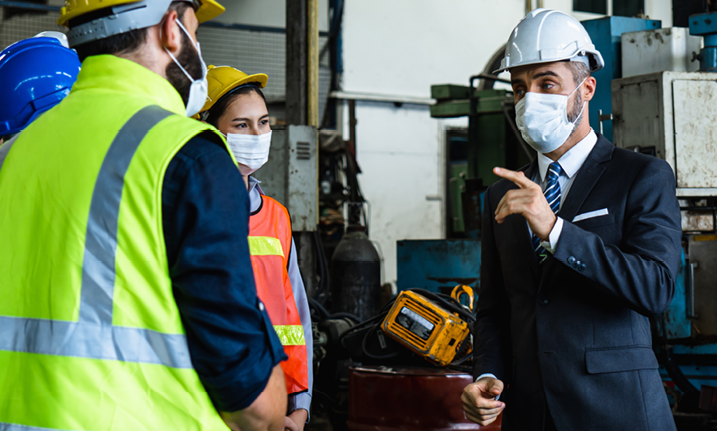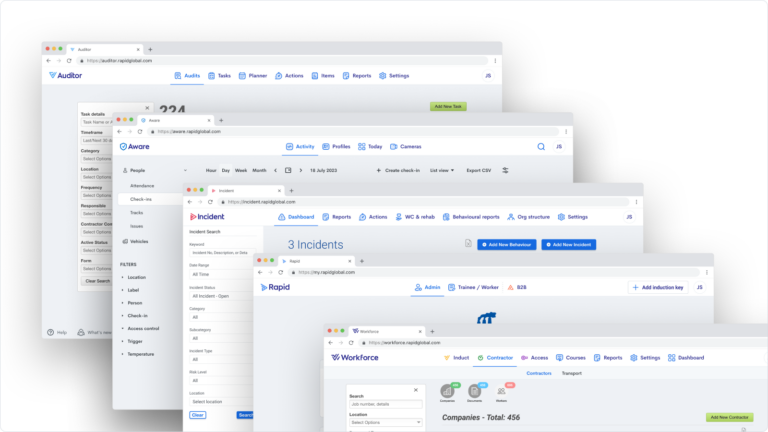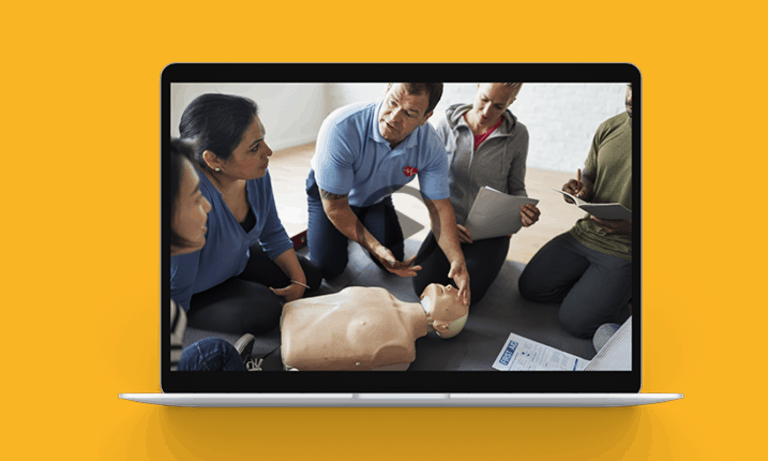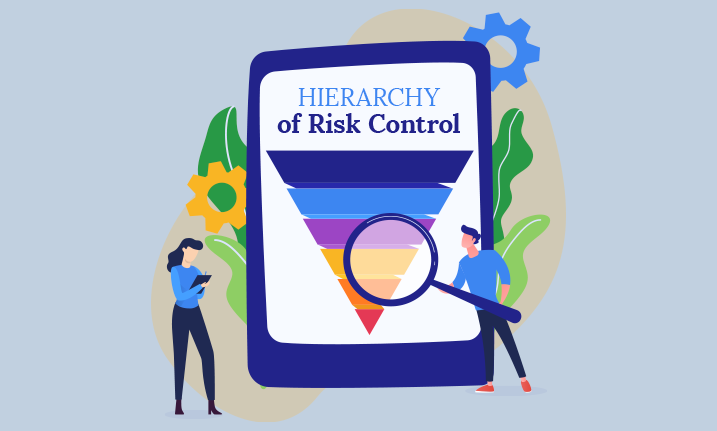

Every business owner knows that risk is inherent in any activity, but what many don’t know is how to control and mitigate those risks.
This article will explore some of those common workplace risks, as well as a useful tool: The hierarchy of control to help reduce risk creating a safer, more productive environment for your employees.
Why control risks?
In the workplace, several risks can impact employees, their health, and productivity. These risks include but aren’t limited to chemical exposure, noise levels, ergonomic issues, etc.
Thankfully, there are plenty of ways that companies can control these risks to ensure that they are not only protecting their workers’ health but also improving efficiency and morale.
By understanding what workplace risk is and how it affects our daily lives, we can better understand why controlling risk is so important for business owners across the globe.
This article will explore some of those common workplace risks, as well as tips on how you can reduce them within your own company.
How can risk be controlled in the workplace?
Many businesses are looking for ways to control risk in the workplace. Risk management is a process that helps identify and eliminate or reduce risks while enhancing opportunities.
By implementing a thorough risk management program, such as the hierarchy of control, companies can minimise business disruptions and maximise performance by focusing on their most critical objectives.
What is the hierarchy of control, and why is it important to follow it?
The hierarchy of control is a system implemented for controlling risk within the workplace. Essentially, the hierarchy is a step-by-step guide for eliminating or reducing risk and uses a ranking system of risk controls from the highest level of protection down to the lowest and least reliable protection.
The hierarchy of control system is the industry-standard framework, providing a universal language that is recognised by various trade and industry sectors, aimed to keep everyone as safe as possible.
The hierarchy is commonly used in high-risk workplaces like manufacturing, construction, oil and gas, mining etc, where hazards are more common and incidents more likely.
What are the six steps of the hierarchy of risk control?
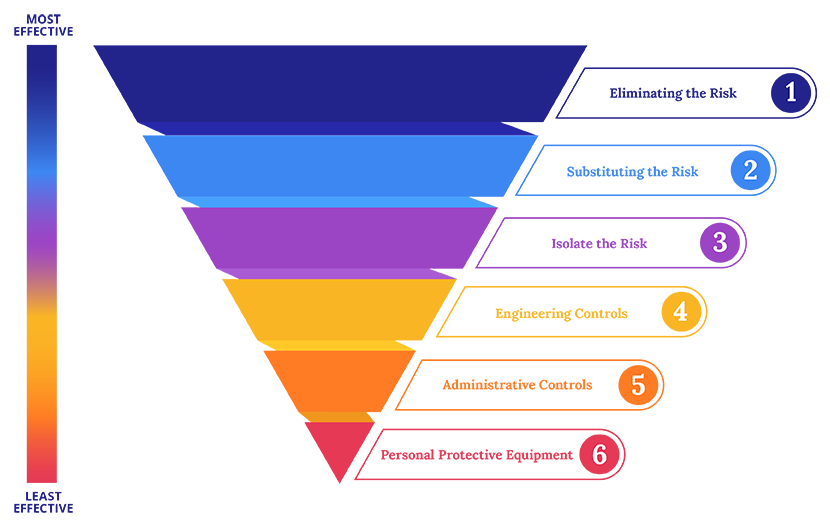
The hierarchy of risk control is often referred to as a pyramid and consists of six levels acting as control levels. Not everyone references the same shape or stages of control, so you may see the hierarchy of risk control represented as a different shape or with varying levels. However, the pyramid typically serves as a simple way to visualise the actual hierarchy of risk control. The hierarchy of risk control consists of six distinct levels that include:
Level 1 – Eliminating the risk
This is the highest level of control or protection – preventing a risk from occurring in the first place. Assessing and identifying the hazards first, then physically removing the hazard and the risk it creates is the most effective control measure.
While it may not always be possible to remove the risk completely, in most cases it should always be explored as the preferred option when it’s available as it means there will be zero chance of an incident occurring.
For example, you can eliminate the risk of a fall from height by doing the work at ground level, or by removing trip hazards or disposing of unwanted chemicals helps to eliminate the risks they create.
Level 2 – Substituting the risk
If it’s not practical to eliminate the hazards and their associated risks, the next level down in the hierarchy is substitution. Risk substitution is the process of removing a risk and replacing it with another risk that has less severe outcomes.
An example of risk substitution could be to replace noisy equipment with a quieter option, or replacing a highly toxic chemical with a less dangerous version.
Level 3 – Isolate the risk
The third level in the hierarchy is risk isolation. Risk isolation involves separating the risk from the people – or as many people as possible. For example:
- Use barriers to separate groups of people from each other or from risks such as power lines or machinery
- Taking advantage of remote technology to operate machines, thus removing the need for people to be near them
The key difference between this level and Level 1-Eliminating the Risk is, the risk is still present with the employee shielded from the hazard by the barrier.
Level 4 – Engineering controls
Engineering risk control involves designing and installing additional safety features into the workplace and site equipment. This control focuses on the source of the hazard and can reduce harm by:
- Isolating
- Enclosing
- Extracting contaminants
- Automating tasks
- Segregating
For example, redesigning a workstation to relieve physical stress and remove ergonomic hazards or installing guardrails on a raised walkway.
Level 5 – Administrative controls
Level five of the hierarchy is administrative controls. These measures are implemented by the chain-of-command to reduce the likelihood of a risk occurring.
Administrative controls typically lessen the risk by helping make people more aware of the hazard.
Through the use of work methods or procedures which are specifically designed to minimise exposure to a hazard, these controls can work to control the risk. For example:
- Developing best practice procedures on how to safely operate machinery
- Limiting time spent on a hazardous task
- Using signage to warn people of a hazard
Level 6 – Personal protective equipment The final level in the hierarchy of risk control is the use of personal protective equipment (PPE). This step in the hierarchy will likely be used along with one of the other levels to eliminate or reduce the risk. Instead, PPE is the final layer of protection, keeping an employee safe from harm if an incident does occur.
Choosing the most effective controls
Workplace risks can come from many sources, but thankfully there are plenty of risk control strategies that can be put into place to help mitigate those risks. By understanding the different types of workplace risks and the corresponding risk control measures, you can develop a comprehensive risk management plan tailored specifically for your company.
Need some expert advice on where to get started? We offer a range of products that can help you create a risk-free and safer environment for your business and employees. Request a demo today and one of our experts will show you how easy it is to get started.



